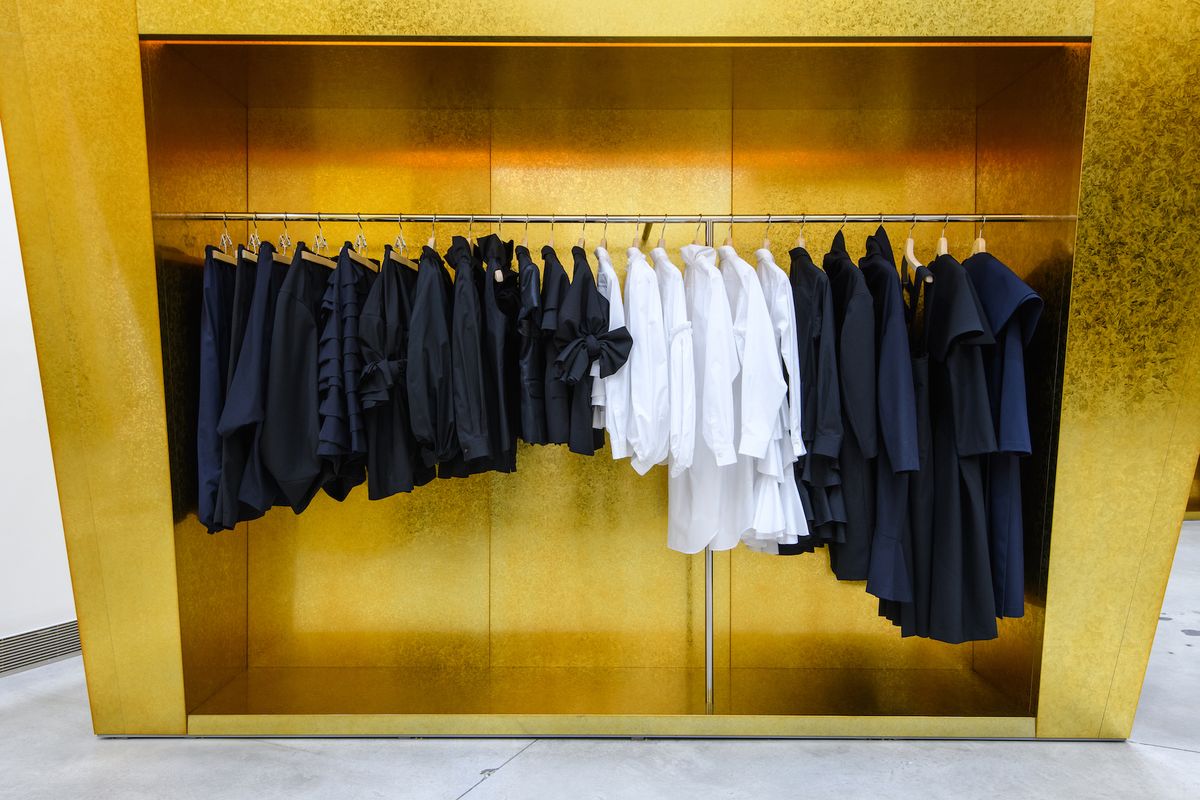A Deep Dive Into the World of High-Fashion Runways: Understanding Clothes as Art
Designers, a lot like skillful musicians, weave complex narratives through color, textile, and kind, challenging typical standards and redefining charm requirements. As we discover these sartorial spectacles, we must ponder: what function does fashion play in forming social worths, and just how does it show the ever-changing tapestry of human feeling and identification?
The Development of Runway Shows
The trajectory of runway programs has changed dramatically over the decades, developing from exclusive industry events to exciting eyeglasses that blend fashion with art. Traditionally, runway shows made love events, held in ateliers or little venues, primarily participated in by purchasers and industry insiders. These very early discussions concentrated on the garments' workmanship and commercial viability, using a sensible and direct display screen of seasonal collections.
As the fashion sector expanded, the nature of runway shows began to change. The 1970s and 1980s noted a transforming point, with designers seeking to distinguish themselves with more staged discussions.
In recent times, modern technology and social media have additionally transformed path programs, making them available to an international target market. Livestreaming and digital systems have democratized style, enabling fanatics worldwide to witness these events in real-time (boutique fashion). This advancement mirrors a more comprehensive cultural shift, where high-fashion runways serve as a vibrant intersection of innovation, design, and performance
Designers as Visionary Artists
How have developers transcended their functions to become visionary musicians? Developers in the high-fashion market have obscured the lines between functional garment creation and the theoretical realm of art. This improvement is obvious in the means they approach their collections, not just as clothing but as extensive expressions of culture, emotion, and identity. By welcoming creative disciplines such as sculpture, paint, and avant-garde installments, developers craft garments that test typical fashion norms and raise them to art types.
Visionary designers draw ideas from a myriad of resources, including abstract art, historical referrals, and individual narratives. They possess a distinct capability to envision and emerge ideas that press the boundaries of traditional style, commonly redefining visual paradigms while doing so. This creative resourcefulness is showcased through significant silhouettes, innovative products, and detailed craftsmanship, which welcome customers to experience fashion as greater than just wearable items.
In addition, the runway functions as a canvas for these musicians, where lighting, music, and set design coalesce to develop immersive experiences. These presentations are not merely displays of clothing yet are managed efficiencies that evoke emotion and provoke idea, verifying the designer's function as a real artist in the contemporary cultural landscape.
Cultural Impacts in Style
Social tapestry weaves its intricate patterns into the textile of style, influencing developers internationally. The vibrant interchange of social tales, traditions, and icons educates and motivates collections that elegance high-fashion paths.
The influence of society on style is frequently seen in the reinterpretation of conventional garments and patterns. The usage of Japanese kimonos, Indian saris, or African prints in modern fashion shows a important site blend of cultural authenticity and contemporary aesthetics. Developers such as Valentino's Pierpaolo Piccioli and Alexander McQueen's Sarah Burton have actually been recognized to integrate rich cultural motifs into their couture collections, translating history into wearable art.

Innovation in Fabric and Layout
Technology in textile and layout constantly reshapes the landscape of high-fashion, pushing limits and redefining possibilities. Over the last few years, technological developments have actually significantly contributed to this evolution, introducing products that challenge conventional understandings. Textiles embedded with wise fibers, efficient in altering shade or managing temperature level, are no more confined to the realm of sci-fi. Developers are progressively exploring the integration of innovation, such as 3D printing, which enables the development of complex frameworks that were formerly unimaginable.
Furthermore, sustainability has actually become a crucial motif in textile advancement. The apparel industry is experiencing a surge in making use of eco-friendly materials, stemmed from recycled plastics, organic fibers, and also biodegradable elements. These innovations not just provide new structures and aesthetics however likewise address important ecological problems. Designers are accepting these products to craft garments that are both aesthetically striking and aware of their eco-friendly footprint.
In regards to design, speculative forms and avant-garde silhouettes are continually transforming the runway. By including unconventional products and advanced methods, designers grow garments that blur the line in between fashion and art, setting brand-new requirements for creativity and expression in the high-fashion sphere.
Effect of Style on Society
Style possesses a profound influence on society, offering as investigate this site both a representation of cultural identity and a stimulant for social adjustment (boutique fashion). With its evolution, fashion has actually mirrored social shifts, enveloping the zeitgeist of numerous ages.
Moreover, style has the power to bridge cultural voids, cultivating understanding and recognition amongst diverse groups. As globalisation increases, the cross-cultural exchange of fashion concepts becomes significantly considerable, advertising inclusivity and diversity. The increase of streetwear, originating from city subcultures, shows exactly how fashion can transcend socio-economic boundaries, granting individuals a means of self-expression and empowerment.
Basically, style is not simply regarding appearances; it is a vibrant pressure that affects worths, attitudes, and societal progress (boutique fashion). By continuously connecting with social and cultural currents, fashion remains an essential part of the collective human experience

Conclusion
High-fashion paths work as dynamic sectors where clothes goes beyond capability to end up being an expressive art form. Developers, akin to visionary artists, manage collections that reflect identity, feeling, and cultural stories, testing standard appearances. The blend of innovative material and style, paired with fancy collection layouts, lights, and music, produces immersive experiences that celebrate cultural variety. This crossway of style and virtuosity not just mesmerizes target markets around the world but likewise influences societal perceptions and advertises a much deeper gratitude for multiculturalism.

Social tapestry weaves its intricate patterns into the material of fashion, affecting designers internationally.Fashion wields an extensive influence on culture, offering as both a representation of social browse around this site identification and a driver for social adjustment.